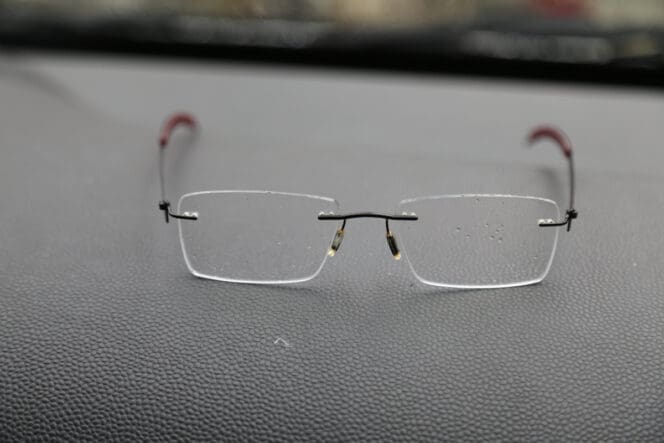Home / Eyeglasses /
Best Glasses for a Low Nasal Bridge
If you have a low nasal bone, you might need a unique pair of low-bridge glasses to fit your facial profile. These glasses will sit nicely on people with a low nose bridge and higher cheekbones.

How to Tell if You Have a Low Nasal Bridge
An easy way to confirm if you have a low nose bridge is if the upper part of your nose is flat when you view it from the side. You can also tell you have a low nose bridge if:
- Glasses rest on your cheeks: In this case, the glasses rest heavily on your cheeks and move when you smile or laugh. You need them adjusted to rest on your nose.
- Traditional frames are too narrow for you: Standard fit glasses will sit high on your face, scrape against your eyelashes, and feel uncomfortable. Most people with a broader face may have this experience.
- You require larger nose pads: Otherwise, the glasses slide down your nose. For glasses to fit properly, the nose pads rest on the sides of the nose. When you have a low nose bridge, the nose pads initially rest on the bridge of your nose, requiring enlargement to sit on the sides of your nose.
While a low nose bridge/saddle nose is normal for people of African and Asian descent, several conditions might cause it, such as Down syndrome, syphilis and Williams syndrome. Sometimes, it has a direct link to facial growth and development.
What to Look for in Glasses if You Have a Low Nose Bridge
You might consider customizing your glasses if you have a low nose bridge. They would be slightly smaller than the standard fit at the top. To select a good pair of low bridge glasses, consider:
- Allow you to try them on: It is a tricky affair settling for a pair of glasses that fit you, so you should visit a shop that allows you to try different fits before deciding on one with the right style and fit.
- Cost: Consider that it is within your budget.
- Durable: Frames are costly, so choose one made from durable materials that will last long.
- Warranty and insurance cover: Settle for a pair with an extensive and lengthy warranty and insurance coverage.
Best Glasses for a Low Nose Bridge
A low nose bridge means your nose is lower than average, and your eyes are closer together than usual. The best move would be to opt for low ridge glasses by considering the following:
- Wearable and light frames: Low bridge frames settle lower on your face. It is best if you avoid frame materials that make them chunky. It would help if you selected durable but light materials like magnesium, aluminum, beryllium, and titanium, whichever you find comfortable.
- Flexible nose pads: Nose pads provide support where the glasses rest on your nose. Selecting adjustable nose pads ensures that the weight of the glasses can settle comfortably, aligned with the shape of your nose bridge. Metallic frames have the most flexible nose pads.
- Tilted lens fit: Low bridge glasses have lenses that tilt away and upwards from your cheekbone. That tilt action prevents unnecessary frame movements caused by your cheeks when talking, laughing, chewing, and walking, reducing eye fatigue.
- Curved temple arms: Low bridge glasses feature a slightly greater curvature on the temple arms than standard fit glasses. Its function is to secure the glasses behind the ear while reducing tension on the nose.
References
-
Low Nasal Bridge. (June 2022). The University of Florida Health.
-
Not the “regular” fit: sociotechnical systems approach to designing eyewear in South Africa. (2020). The University of Johannesburg.
-
Eyeglasses for Global Development: Bridging the Visual Divide. (June 2016). EYElliance, World Economic Forum.
-
The weight of spectacle frames and the area of their nose pads. (July 2010). Ophthalmic and Physiological Optics.
-
Low Nasal Bridge. Healthing Canada.
Last Updated July 1, 2022
Note: This page should not serve as a substitute for professional medical advice from a doctor or specialist. Please review our about page for more information.